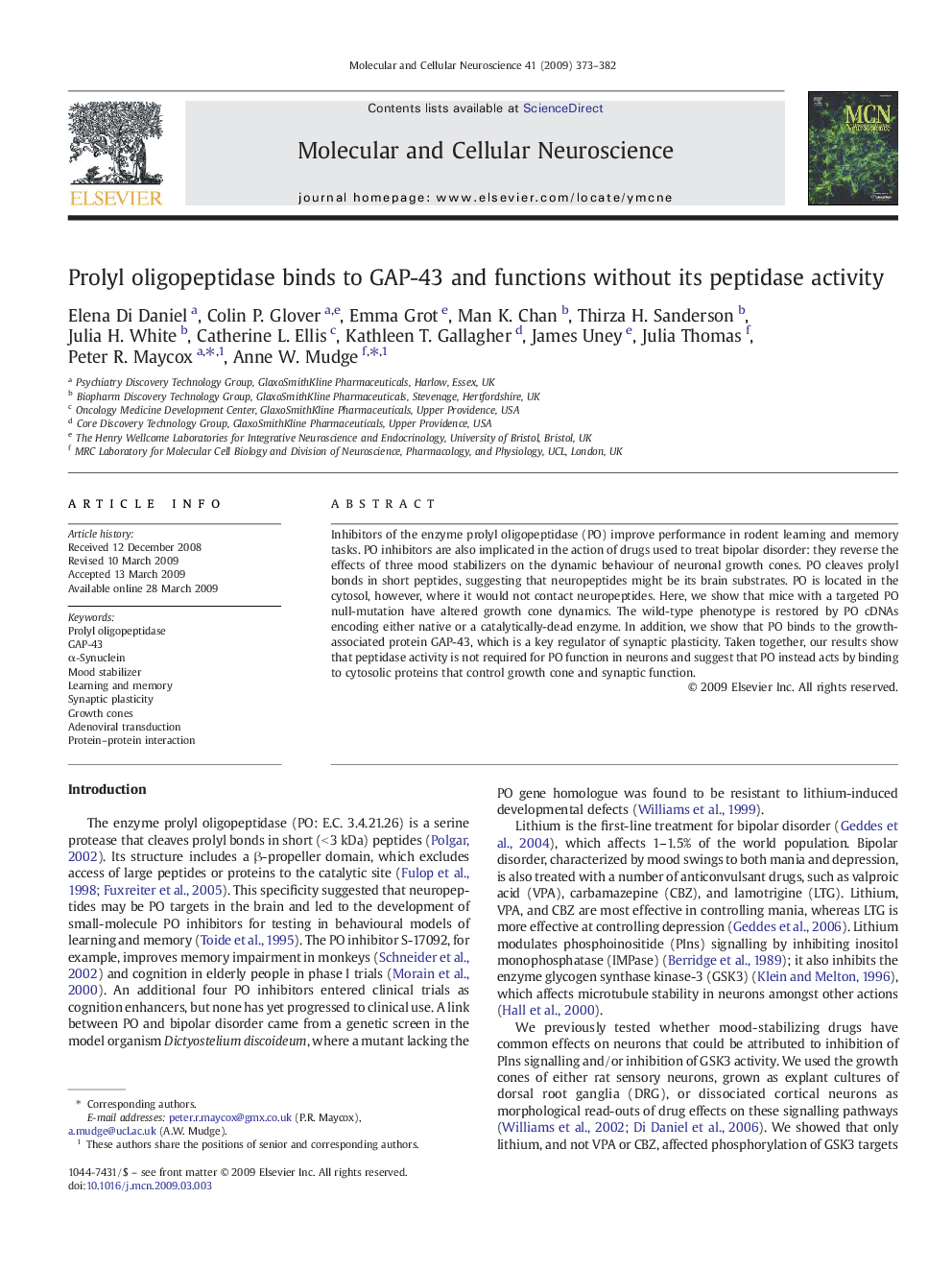| Article ID | Journal | Published Year | Pages | File Type |
|---|---|---|---|---|
| 2198944 | Molecular and Cellular Neuroscience | 2009 | 10 Pages |
Inhibitors of the enzyme prolyl oligopeptidase (PO) improve performance in rodent learning and memory tasks. PO inhibitors are also implicated in the action of drugs used to treat bipolar disorder: they reverse the effects of three mood stabilizers on the dynamic behaviour of neuronal growth cones. PO cleaves prolyl bonds in short peptides, suggesting that neuropeptides might be its brain substrates. PO is located in the cytosol, however, where it would not contact neuropeptides. Here, we show that mice with a targeted PO null-mutation have altered growth cone dynamics. The wild-type phenotype is restored by PO cDNAs encoding either native or a catalytically-dead enzyme. In addition, we show that PO binds to the growth-associated protein GAP-43, which is a key regulator of synaptic plasticity. Taken together, our results show that peptidase activity is not required for PO function in neurons and suggest that PO instead acts by binding to cytosolic proteins that control growth cone and synaptic function.
